
The Rank Organisation, was a British entertainment conglomerate founded by industrialist J. Arthur Rank in April 1937, Rank also served as the company chairman. It quickly became the largest and most vertically integrated film company in the United Kingdom, owning production, distribution and exhibition facilities as well as manufacturing projection equipment and chairs. It also diversified into the manufacture of radios, TVs and photocopiers. The company name lasted until February 1996, when the name and some of the remaining assets were absorbed into the newly structured Rank Group plc. The company itself became a wholly owned subsidiary of Xerox and was renamed XRO Limited in 1997.

The Blue Lamp is a 1950 British police procedural film directed by Basil Dearden and starring Jack Warner as PC Dixon, Jimmy Hanley as newcomer PC Mitchell, and Dirk Bogarde as criminal Tom Riley.
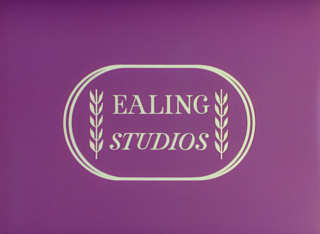
The Ealing comedies is an informal name for a series of comedy films produced by the London-based Ealing Studios during a ten-year period from 1947 to 1957. Often considered to reflect Britain's post-war spirit, the most celebrated films in the sequence include Kind Hearts and Coronets (1949), Whisky Galore! (1949), The Lavender Hill Mob (1951), The Man in the White Suit (1951) and The Ladykillers (1955). Hue and Cry (1947) is generally considered to be the earliest of the cycle, and Barnacle Bill (1957) the last, although some sources list Davy (1958) as the final Ealing comedy. Many of the Ealing comedies are ranked among the greatest British films, and they also received international acclaim.

Sir Michael Elias Balcon was an English film producer known for his leadership of Ealing Studios in West London from 1938 to 1955. Under his direction, the studio became one of the most important British film studios of the day. In an industry short of Hollywood-style moguls, Balcon emerged as a key figure, and an obdurately British one too, in his benevolent, somewhat headmasterly approach to the running of a creative organization. He is known for his leadership, and his guidance of young Alfred Hitchcock.

Charles Ainslie Crichton was an English film director and editor.

Harold Thomas Gregson, known professionally as John Gregson, was an English actor of stage, television and film, with 40 credited film roles. He was best known for his crime drama and comedy roles.
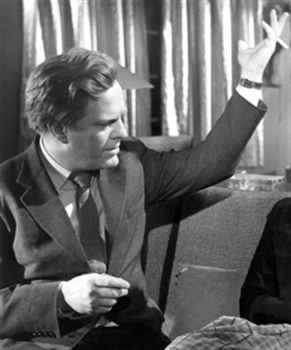
Seth Holt was a Palestinian-born British film director, producer and editor. His films are characterized by their tense atmosphere and suspense, as well as their striking visual style. In the 1960s, Movie magazine championed Holt as one of the finest talents working in the British film industry, although his output was notably sparse.
Charles Herbert Frend was an English film director and editor, best known for his films produced at Ealing Studios. He began directing in the early 1940s and is known for such films as Scott of the Antarctic (1948) and The Cruel Sea (1953).
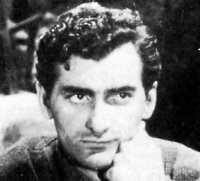
Bonar Colleano was an American stage and film actor based in the United Kingdom.

Susan Shaw was an English actress.

Where No Vultures Fly is a 1951 British adventure film directed by Harry Watt and starring Anthony Steel and Dinah Sheridan. It was released under the title Ivory Hunter in the United States. The film was inspired by the work of the conservationist Mervyn Cowie. The film's opening credits state that "the characters in this film are imaginary, but the story is based on the recent struggle of Mervyn Cowie to form the National Parks of Kenya." The title Where No Vultures Fly denotes areas where there are no dead animals. The film has a sequel, West of Zanzibar.

The Man Inside is a 1958 British crime adventure film brought to the screen by Warwick Film Productions. The screenplay by David Shaw was based on a novel by M. E. Chaber and the film was directed by John Gilling. Bonar Colleano played his last role in it before he died in a car accident.

Pool of London is a 1951 British noir crime film directed by Basil Dearden. It stars Bonar Colleano, Earl Cameron and Susan Shaw.

Good-Time Girl is a 1948 British film noir-crime drama film directed by David MacDonald and starring Jean Kent, Dennis Price and Herbert Lom. A homeless girl is asked to explain her bad behaviour in the juvenile court, and says she’s run away from home because she’s unhappy there. They explain in detail what happened to the last girl who thought she could cope on her own, and this becomes the main plot.

Is Your Honeymoon Really Necessary? is a 1953 British comedy film directed by Maurice Elvey. The film was based on Vivian Tidmarsh's 1944 West End hit play by the same name.
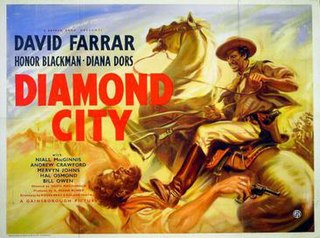
Diamond City is a 1949 British drama film directed by David MacDonald and starring David Farrar, Honor Blackman, Diana Dors and Niall MacGinnis.

Adelphi Films Limited was a British film production company. With its sister company Advance, it produced over 30 films in the 1940s and 1950s and distributed many more. Adelphi linked Gainsborough Pictures and the raw “kitchen sink” dramas of the early 1960s.
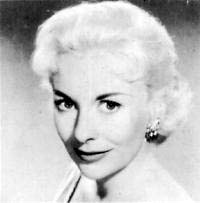
Jane Hylton was an English actress who accumulated 30 film credits, mostly in the 1940s and 1950s, before moving into television work in the latter half of her career in the 1960s and 1970s.
Sailors Three is a 1940 British war comedy film directed by Walter Forde and starring Tommy Trinder, Claude Hulbert and Carla Lehmann. This was cockney music hall comedian Trinder's debut for Ealing, the studio with which he was to become most closely associated. It concerns three British sailors who accidentally find themselves aboard a German ship during the Second World War.

Crow Hollow is a 1952 British mystery film directed by Michael McCarthy and starring Donald Houston, Natasha Parry and Patricia Owens. It is based on the 1950 novel Crow Hollow by Dorothy Eden. In the film, newlywed Ann Amour survives a number of murder attempts, while her maid is found stabbed to death by unknown assailants. Ann is unaware of who is trying to kill her.


















